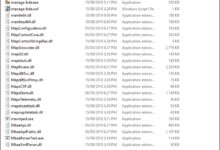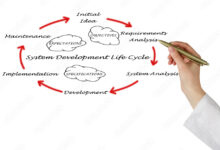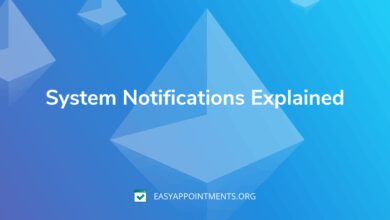System Monitor: 7 Powerful Tools to Boost Performance Instantly
Ever wondered why your server slows down or your app crashes unexpectedly? A solid system monitor can be the hero you didn’t know you needed. It’s not just about tracking CPU usage—it’s about gaining real-time insights, preventing disasters, and optimizing performance across your entire IT ecosystem. Let’s dive into what makes system monitoring essential in today’s digital world.
What Is a System Monitor and Why It Matters
A system monitor is a software tool or hardware device designed to track, analyze, and report on the performance and health of computer systems, servers, networks, and applications. In modern IT environments—ranging from small businesses to enterprise-level data centers—system monitoring has become indispensable for maintaining uptime, security, and efficiency.
Core Functions of a System Monitor
The primary role of a system monitor is to provide continuous oversight of critical system metrics. This includes tracking CPU utilization, memory consumption, disk I/O operations, network bandwidth usage, and process activity. By collecting this data in real time, administrators can identify performance bottlenecks before they escalate into outages.
- Real-time tracking of CPU, RAM, and disk usage
- Monitoring active processes and services
- Detecting unauthorized access or suspicious behavior
- Logging system events for audit and compliance
Types of System Monitoring
Not all monitoring is the same. Depending on the environment and objectives, organizations deploy different types of system monitoring:
- Hardware Monitoring: Tracks physical components like temperature, fan speed, power supply status, and disk health.
- Software Monitoring: Observes application performance, service availability, and software resource usage.
- Network Monitoring: Focuses on bandwidth, latency, packet loss, and firewall activity.
- Cloud Monitoring: Extends visibility to virtual machines, containers, and serverless functions in cloud environments like AWS or Azure.
“Without monitoring, you’re flying blind. You won’t know when something breaks until users start complaining.” — DevOps Engineer, Fortune 500 Tech Firm
Key Metrics Tracked by a System Monitor
To maintain optimal system performance, a system monitor focuses on several key performance indicators (KPIs). These metrics help IT teams understand how resources are being used and whether systems are operating within acceptable thresholds.
CPU Usage and Load Average
CPU usage indicates how much processing power is currently being consumed. High CPU usage over extended periods may signal inefficient code, runaway processes, or insufficient hardware capacity. The load average, typically shown as 1-minute, 5-minute, and 15-minute averages, reflects the number of processes waiting for CPU time.
For example, a sustained load average higher than the number of CPU cores often means the system is overloaded. Tools like top and htop provide real-time CPU monitoring on Linux systems.
Memory Utilization and Swap Activity
Memory (RAM) monitoring helps detect memory leaks and over-allocation. When physical memory is exhausted, systems start using swap space on disk, which is significantly slower. Excessive swap usage can degrade performance dramatically.
A good system monitor will alert when memory usage exceeds a threshold—say, 80%—and can even correlate memory spikes with specific applications or services. Tools like Netdata offer granular memory tracking with visual dashboards.
Disk I/O and Latency
Disk input/output (I/O) operations are crucial for database servers, file storage systems, and virtual machines. Monitoring disk read/write speeds, queue lengths, and latency helps identify storage bottlenecks.
For instance, high disk latency could indicate failing hardware or excessive random access patterns. SMART (Self-Monitoring, Analysis, and Reporting Technology) tools integrated into system monitors can predict disk failures before they occur, reducing downtime risk.
Top 7 System Monitor Tools in 2024
Choosing the right system monitor depends on your infrastructure, budget, and technical requirements. Here are seven of the most powerful and widely used tools available today.
1. Nagios XI – The Enterprise-Grade System Monitor
Nagios XI is one of the most established names in system monitoring. It offers comprehensive monitoring for networks, servers, applications, and services. With a robust plugin architecture, it supports thousands of third-party extensions.
- Real-time alerting via email, SMS, or Slack
- Customizable dashboards and reporting
- Supports both on-premise and hybrid cloud deployments
Learn more at nagios.com.
2. Zabbix – Open Source Powerhouse
Zabbix is a free and open-source system monitor known for its scalability and flexibility. It can monitor everything from network devices to cloud instances, making it ideal for large-scale environments.
- Built-in auto-discovery of network devices
- Advanced alerting and dependency mapping
- Supports distributed monitoring across multiple nodes
Zabbix excels in environments requiring deep customization. Visit zabbix.com for downloads and documentation.
3. Datadog – Cloud-Native System Monitor
Datadog is a SaaS-based monitoring platform designed for cloud and containerized environments. It integrates seamlessly with AWS, Google Cloud, Kubernetes, and Docker.
- Real-time analytics and machine learning-based anomaly detection
- Full-stack observability (metrics, logs, traces)
- User-friendly interface with drag-and-drop dashboards
Datadog is perfect for DevOps teams managing microservices. Explore it at datadoghq.com.
4. Prometheus – The DevOps Favorite
Prometheus is an open-source system monitor originally developed at SoundCloud. It’s now a CNCF (Cloud Native Computing Foundation) project and widely adopted in Kubernetes environments.
- Pull-based monitoring model with time-series database
- Powerful query language (PromQL)
- Excellent integration with Grafana for visualization
Prometheus is lightweight and highly efficient for dynamic environments. Get started at prometheus.io.
5. PRTG Network Monitor – All-in-One Solution
Paessler’s PRTG is a Windows-based system monitor that combines network, server, and application monitoring in a single platform. It uses sensors to collect data from various sources.
- Over 200 sensor types (SNMP, WMI, NetFlow, etc.)
- Auto-discovery of devices on the network
- Free version available for up to 100 sensors
PRTG is user-friendly and ideal for SMBs. More info at paessler.com.
6. New Relic – Application-Centric Monitoring
New Relic focuses on application performance monitoring (APM), but its system monitor capabilities extend to infrastructure metrics. It provides deep insights into code-level performance issues.
- Real-user monitoring (RUM) and synthetic monitoring
- AI-powered root cause analysis
- Support for Java, .NET, Node.js, Python, and more
New Relic is great for developers and SREs. Check it out at newrelic.com.
7. Netdata – Real-Time Performance Monitoring
Netdata stands out for its real-time, second-by-second monitoring with zero configuration. It’s open source and runs on Linux, FreeBSD, and Docker.
- Live dashboards with sub-second granularity
- Automatic anomaly detection
- Lightweight agent with minimal overhead
Netdata is perfect for troubleshooting live issues. Learn more at netdata.cloud.
How to Choose the Right System Monitor for Your Needs
Selecting the best system monitor isn’t just about features—it’s about alignment with your business goals, technical stack, and team expertise. Here’s a structured approach to help you decide.
Assess Your Infrastructure Complexity
Start by evaluating the size and complexity of your IT environment. Are you managing a few local servers, or do you have a hybrid cloud setup with Kubernetes clusters?
- Small businesses: Consider PRTG or Netdata for simplicity.
- Mid-sized companies: Zabbix or Nagios offer scalability.
- Enterprises with cloud-native apps: Datadog or New Relic provide full-stack observability.
Evaluate Integration and Compatibility
Your system monitor should integrate smoothly with existing tools. Check compatibility with:
- Operating systems (Linux, Windows, macOS)
- Cloud platforms (AWS, Azure, GCP)
- Container orchestration (Kubernetes, Docker Swarm)
- CI/CD pipelines and DevOps tools (Jenkins, GitLab, Terraform)
For example, Prometheus integrates natively with Kubernetes, while Datadog supports over 500 integrations.
Consider Alerting and Notification Features
A system monitor is only as good as its alerting system. Look for tools that support:
- Custom thresholds and dynamic baselines
- Escalation policies (e.g., notify on-call engineer after 5 minutes)
- Multi-channel notifications (email, SMS, Slack, PagerDuty)
- Silencing options during maintenance windows
Tools like Nagios and Zabbix allow complex alert routing, while Datadog offers AI-driven noise reduction.
Setting Up a System Monitor: Step-by-Step Guide
Deploying a system monitor doesn’t have to be complicated. Follow these steps to get started quickly and effectively.
Step 1: Define Monitoring Objectives
Before installing any tool, clarify what you want to achieve. Common objectives include:
- Reducing system downtime
- Improving application response time
- Meeting SLAs (Service Level Agreements)
- Ensuring compliance with regulations (e.g., HIPAA, GDPR)
These goals will guide your choice of metrics, tools, and alerting strategies.
Step 2: Install and Configure the Monitoring Agent
Most system monitors require an agent to be installed on the target machines. For example, to set up Zabbix:
- Download the Zabbix agent from zabbix.com/download
- Edit the configuration file (
zabbix_agentd.conf) to point to your Zabbix server - Start the service and verify connectivity
For agentless monitoring (e.g., SNMP-based), ensure network access and proper credentials.
Step 3: Create Dashboards and Alerts
Once data starts flowing, build dashboards to visualize key metrics. Use graphs for CPU, memory, and disk usage trends. Set up alerts for critical thresholds:
- Email alert when CPU usage > 90% for 5 minutes
- Slack notification if a web server goes down
- Auto-trigger script to restart a frozen service
Test your alerts to ensure they work as expected.
Common Challenges in System Monitoring and How to Overcome Them
Even with the best tools, teams face common pitfalls in system monitoring. Recognizing these early can save time and prevent alert fatigue.
Alert Fatigue and Noise
Too many alerts desensitize teams. A study by PagerDuty found that 54% of alerts are ignored due to overload. To combat this:
- Use intelligent alerting (e.g., Datadog’s anomaly detection)
- Set up alert deduplication and grouping
- Implement severity levels (Critical, Warning, Info)
“We reduced our alert volume by 70% just by tuning thresholds and using dynamic baselines.” — SRE at a fintech startup
Data Overload Without Context
Collecting terabytes of metrics is useless without context. Correlate data across systems to understand root causes. For example, a spike in API latency might be linked to a database lock, not the application itself.
Solutions:
- Use APM tools like New Relic or AppDynamics
- Integrate logs and traces with metrics (observability triad)
- Leverage AI/ML for pattern recognition
Scalability Issues
As your infrastructure grows, your system monitor must scale too. Some tools struggle with high-cardinality data (e.g., thousands of containers).
Best practices:
- Use distributed architectures (e.g., Prometheus with Thanos)
- Optimize data retention policies
- Offload historical data to cloud storage
Best Practices for Effective System Monitoring
To get the most out of your system monitor, follow these industry-proven best practices.
Monitor End-to-End User Experience
Don’t just monitor servers—monitor what users experience. Synthetic monitoring simulates user interactions (e.g., logging in, loading a page) to detect issues before real users do.
- Use tools like Pingdom or Datadog Synthetic Monitoring
- Track page load times, API response times, and transaction success rates
- Set up global monitoring nodes to test from different regions
Automate Responses to Common Issues
Go beyond alerting—automate remediation. For example:
- Auto-restart crashed services
- Scale up cloud instances during traffic spikes
- Block IPs showing brute-force attack patterns
Tools like Ansible, Terraform, and PagerDuty support automated runbooks.
Regularly Review and Tune Monitoring Rules
Monitoring isn’t a “set and forget” task. Regularly audit your alerts, dashboards, and thresholds to ensure they remain relevant.
- Schedule monthly review meetings
- Remove outdated sensors or checks
- Update baselines based on seasonal traffic patterns
Future Trends in System Monitoring
The world of system monitoring is evolving rapidly. Emerging technologies are reshaping how we observe and manage IT systems.
AIOps and Predictive Monitoring
Artificial Intelligence for IT Operations (AIOps) uses machine learning to predict failures before they happen. For example, analyzing historical data to forecast disk failure or memory exhaustion.
- Tools like Moogsoft and BigPanda lead in AIOps
- Reduces mean time to resolution (MTTR)
- Automatically correlates events across systems
Serverless and Edge Monitoring
As applications move to serverless (AWS Lambda, Azure Functions) and edge computing (CDNs, IoT devices), traditional monitoring models fall short.
- New tools like Thundra and Dashbird specialize in serverless observability
- Edge monitoring requires lightweight agents and efficient data transmission
- Focus shifts from infrastructure to function execution and cold starts
OpenTelemetry and Standardization
OpenTelemetry is an open-source project under CNCF that provides a unified way to collect telemetry data (metrics, logs, traces). It aims to standardize observability across vendors.
- Supported by major players: Google, Microsoft, AWS, Datadog
- Reduces vendor lock-in
- Enables consistent data collection across hybrid environments
Learn more at opentelemetry.io.
What is a system monitor used for?
A system monitor is used to track the performance, availability, and health of computer systems, networks, and applications. It helps detect issues like high CPU usage, memory leaks, disk failures, and service outages, enabling proactive maintenance and minimizing downtime.
Which system monitor tool is best for beginners?
For beginners, PRTG Network Monitor and Netdata are excellent choices due to their intuitive interfaces and minimal setup requirements. Both offer free versions and extensive documentation to help new users get started quickly.
Can a system monitor work in cloud environments?
Yes, modern system monitors like Datadog, Prometheus, and Zabbix are designed to work seamlessly in cloud environments. They support auto-discovery of cloud instances, integration with cloud APIs, and monitoring of virtualized resources such as containers and serverless functions.
Is system monitoring only for large enterprises?
No, system monitoring is valuable for organizations of all sizes. Small businesses can benefit from early issue detection, improved security, and better resource utilization. Many tools offer free or low-cost tiers suitable for smaller setups.
How does system monitoring improve security?
System monitoring enhances security by detecting unusual activity, such as unauthorized access attempts, abnormal process behavior, or sudden spikes in network traffic. Real-time alerts allow teams to respond quickly to potential breaches or malware infections.
Choosing and implementing the right system monitor is a strategic decision that impacts reliability, performance, and user satisfaction. From open-source powerhouses like Zabbix and Prometheus to cloud-native platforms like Datadog and New Relic, there’s a tool for every need. The key is to define clear objectives, avoid alert fatigue, and embrace automation and AI-driven insights. As technology evolves, so too must our monitoring strategies—moving from reactive dashboards to predictive, self-healing systems. Whether you’re managing a single server or a global microservices architecture, a robust system monitor is no longer optional—it’s essential.
Further Reading:








